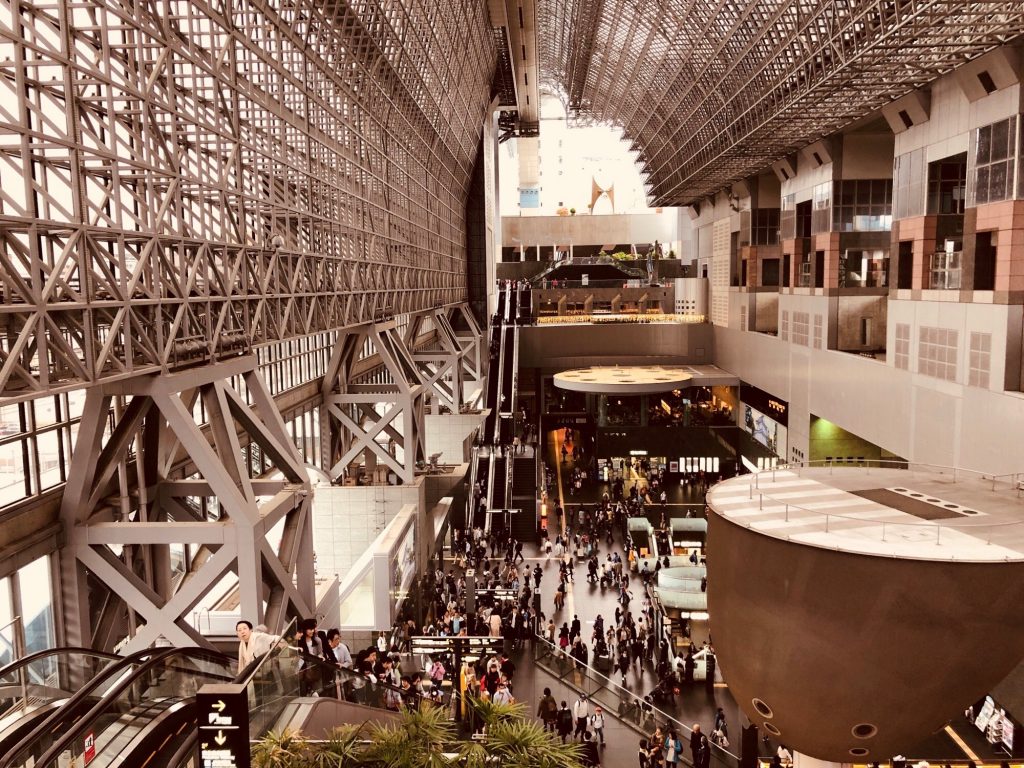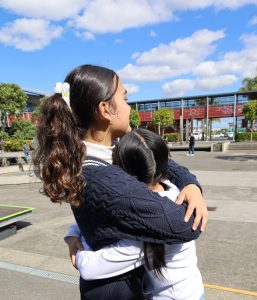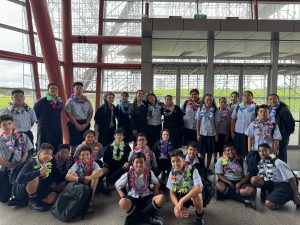The tour party caught a Shinkansen ‘bullet’ train bound for Kyoto and two and a bit hours later they arrived at Kyoto Station. As Mrs Havell put it, “It was totally unexpected. Architecturally, it is very grand.” And indeed, it is – modern and ‘grand’ in every sense of the word.
Kyoto, the former capital of Japan, famous worldwide for its temples and shrines, was the centre of politics and culture for 1,100 years.
Kyoto Prefecture stretches out from the southeast to the northwest in the central and northern parts of the Kansai region. It has four geographical features, the saw-toothed coastal area around Maizuru Bay in the northeast, the Tanba Mountains around its centre, the Kyoto Basin in the southeast, and the Yamashiro Basin.
Kyoto became the capital of Japan in the 8th century. It flourished as the centre for Japanese politics, economy and culture for some 1,100 years, until the capital functions were transferred to Tokyo in the mid-19th century. There remain many temples and shrines in Kyoto that were built during this long period.
Seventeen historic sites including, Kiyomizu-dera Temple and Nijo Castle (both of which the group will visit), are inscribed as World Cultural Heritage Sites.
While in Kyoto they will also see a traditional arts and crafts centre, the Golden Pavilion, street markets and the city centre.








